10. Photography Composition
In the preceding chapters of this course we’ve spoken about how cameras work, how to get creative using aperture and shutter speed and how lenses and light can impact the look of your shot too, but one creative element relating to photography that we haven’t yet discussed is composition.
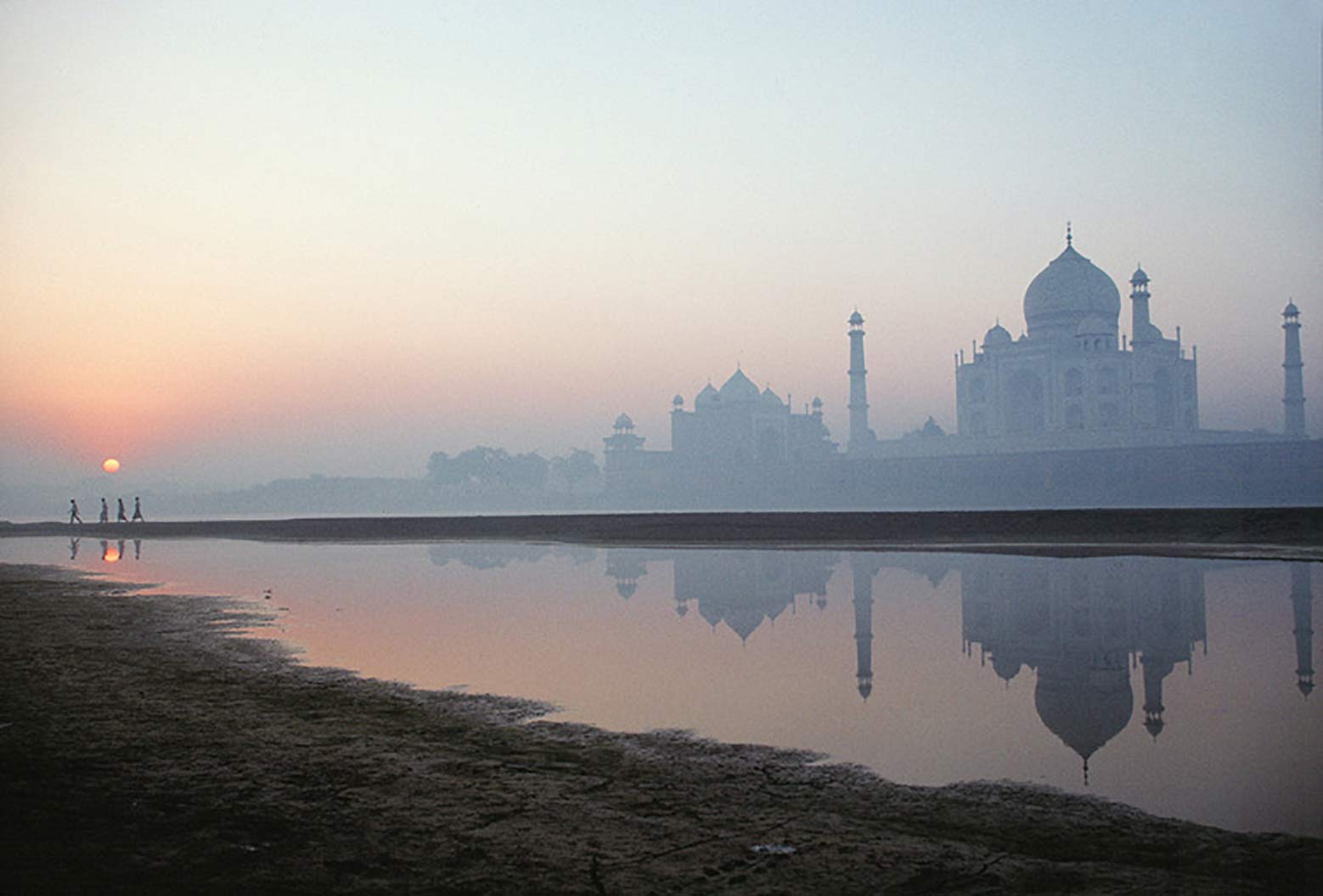
Composition in photography
Composition (which I referred to earlier as the subject) refers to how we lay the picture out and how we place objects within the scene to get the most aesthetically pleasing results. The purpose of composition is to guide the viewers eye through the picture, and this we do through careful framing, arrangement and placement of objects within the scene.
One of the most important things to remember about composition is this: although there are compositional guidelines such as the rule of thirds or golden ratio, they are simply that — guidelines. Often, some of the best images completely ignore traditional compositional convention. So why then, is it important to know and understand them?
By following compositional guidelines, although you’re not guaranteed a great image, you will have a much better chance of capturing a good image compared to if you don’t understand composition at all.
That being said, composition isn’t the be-all-and-end-all of good photography. There are other factors, such as the science behind our visual systems, that can also be used to create effective imagery too.
Rules of composition
The most common compositional rule you’re likely to have heard of is the rule of thirds. It’s easy to remember and fairly simple to apply, which makes it a popular method to apply for those just starting out with photography.
Rule of thirds
One of the most well known compositional rules, the rule of thirds divides the image into three rows of three, splitting the image into nine equal blocks. The idea is to position important elements so that they fall either on the dividing lines or at the points of intersection. The reasoning behind this rule is that by placing objects within these areas helps to create more interest in the image than if you were to simply centre the subject.
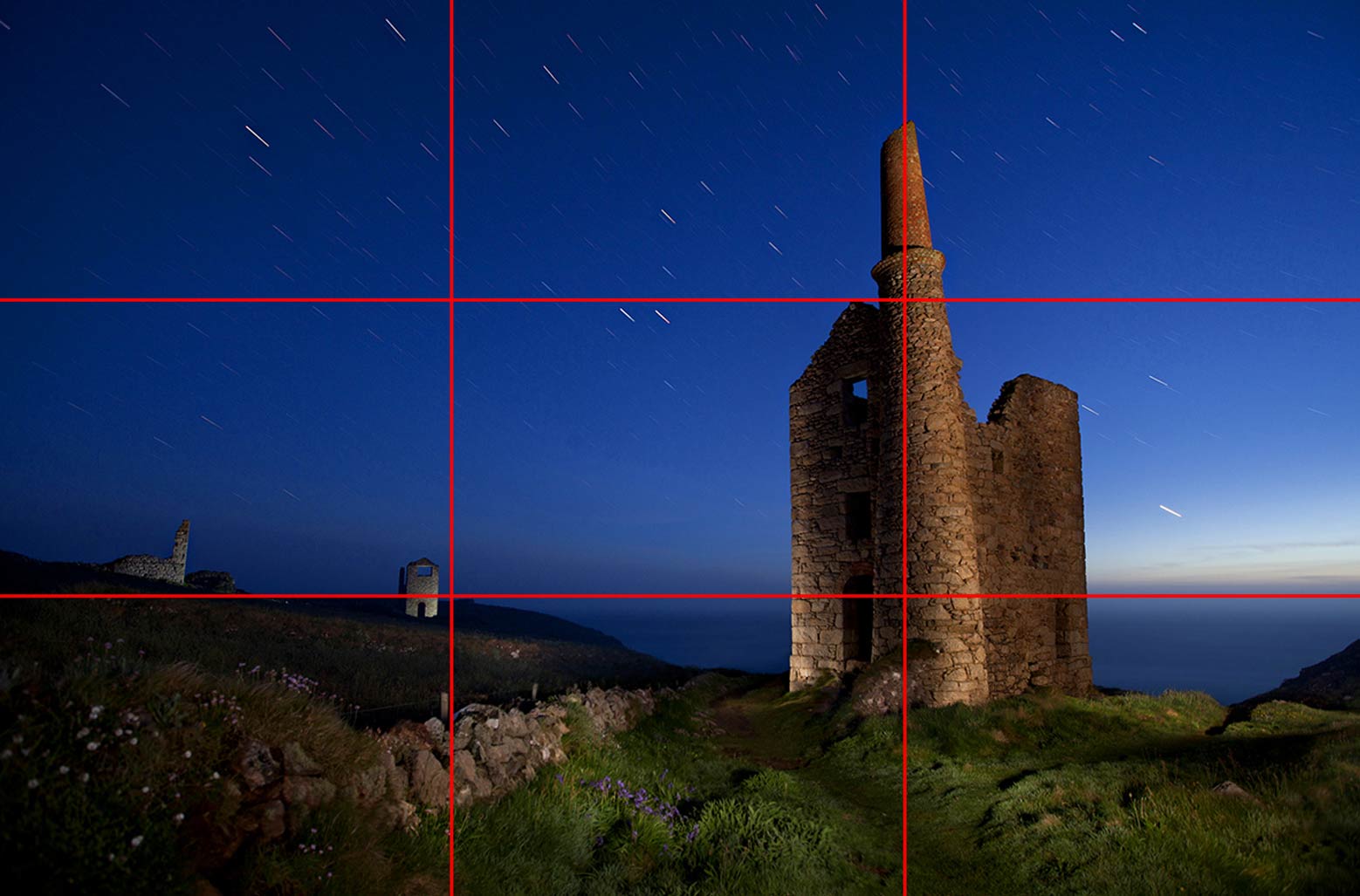
Interested in night photography? Click here.
In this chapter I show you a number of examples of how I’ve applied the rule of thirds to many different types of photography and explain why it can help. But there are a few other rules of composition that you may have heard of too.
Golden ratio - The golden ratio is a mathematical formula that relates to Phi (1.6180339…). Two quantities (a and b) fit the golden ratio if b is to a what a is to the sum of a + b. In this ratio, a is 1.6180339 times bigger than b. This formula forms the basis for other compositional rules, such as the golden spiral and even to some extent the rule of thirds.
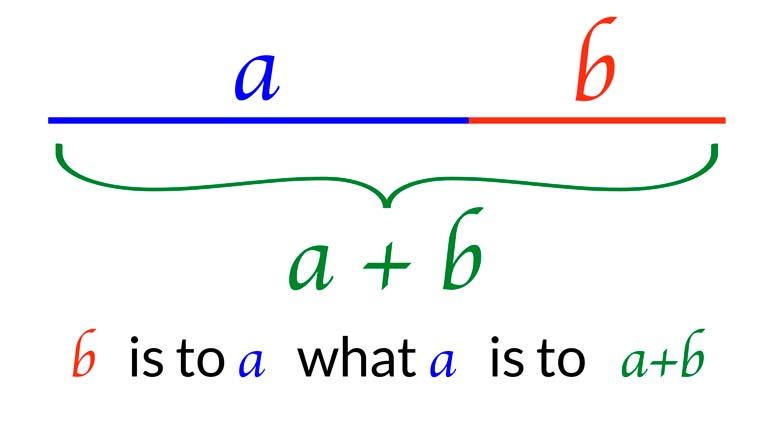
Golden spiral - The golden spiral, developed by Fibonacci, is, contrary to its' name, composed out of a series of Phi Grids. These grids determine the path of a snail-shaped spiral (known as the Fibonacci Spiral), which guides your eye around the image to the focal point.
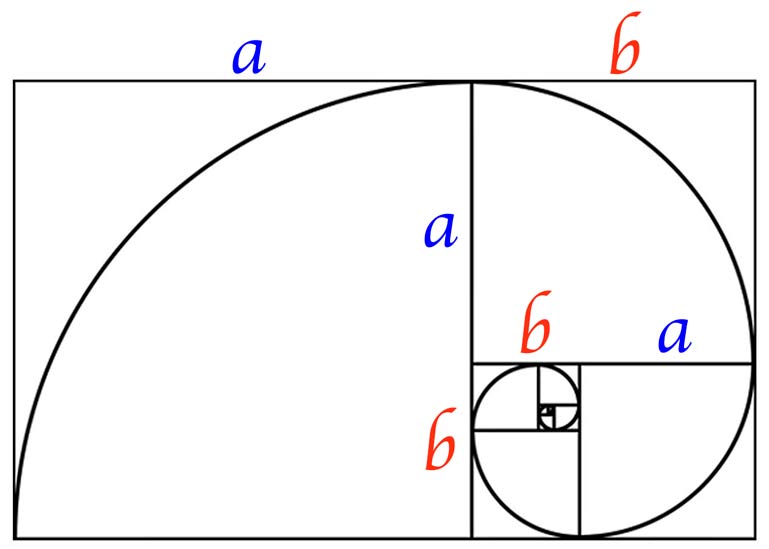
Having now explained these different rules, you would have seen in the video that I don't believe the influence or importance of these rules are as great as people often believe.
Composition techniques
In addition to compositional rules, there are a number of compositional techniques you can include in your images.
Leading lines
Leading lines are lines (or curves) that guide the viewer’s eye to the subject. Anything from fence posts to winding roads, leading lines can be straight, curved, diagonal or converging. These lines help keep our eye in the frame and draw attention to the subject.
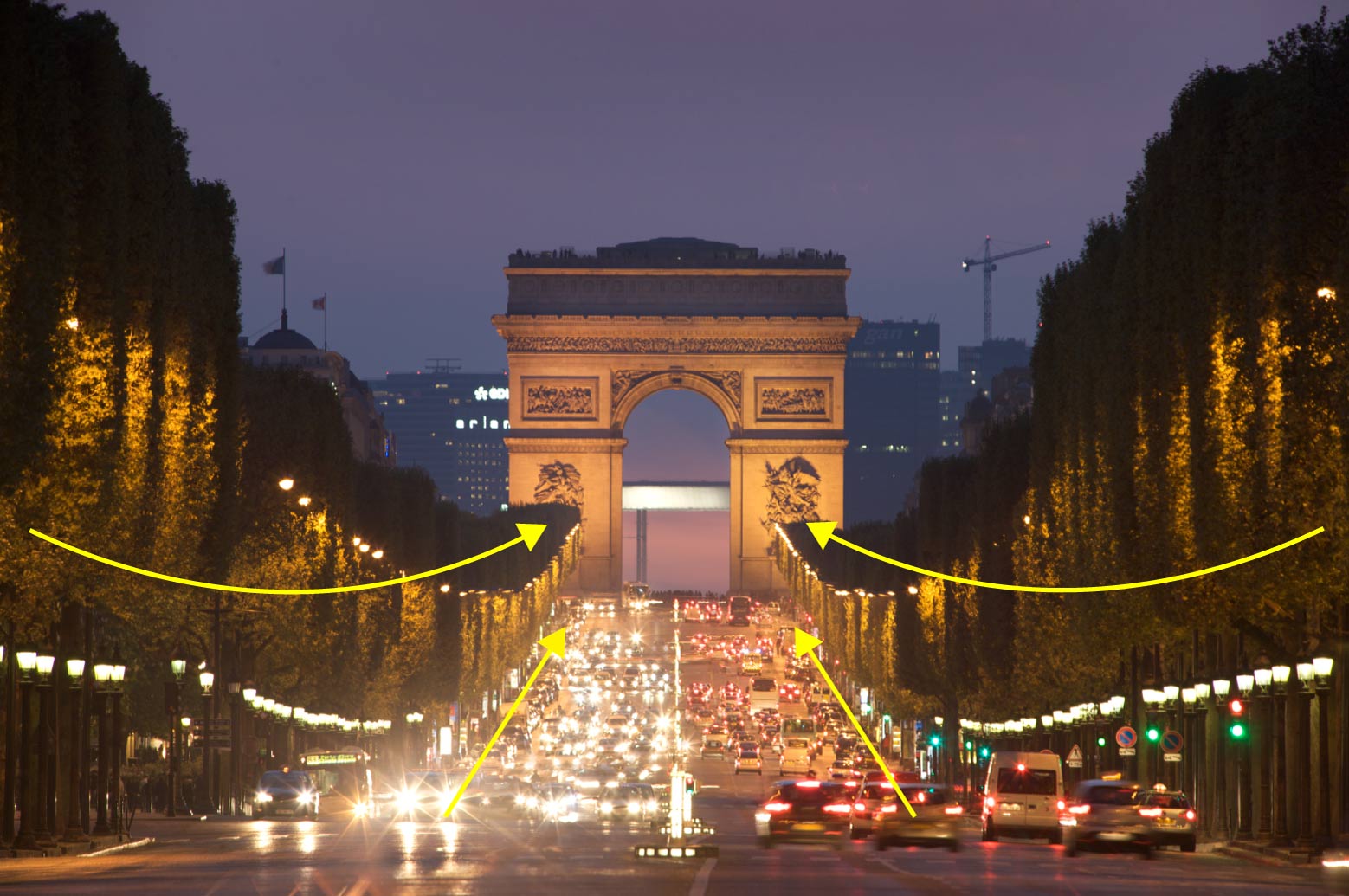
Interested in travel photography? Click here.
Symmetry
Although this generally goes against the rule of thirds, symmetry can be very effective when used correctly. Often quite striking, symmetry can help remove or minimise additional distractions and focus the eye.
Symmetry can be seen in the images above and below.
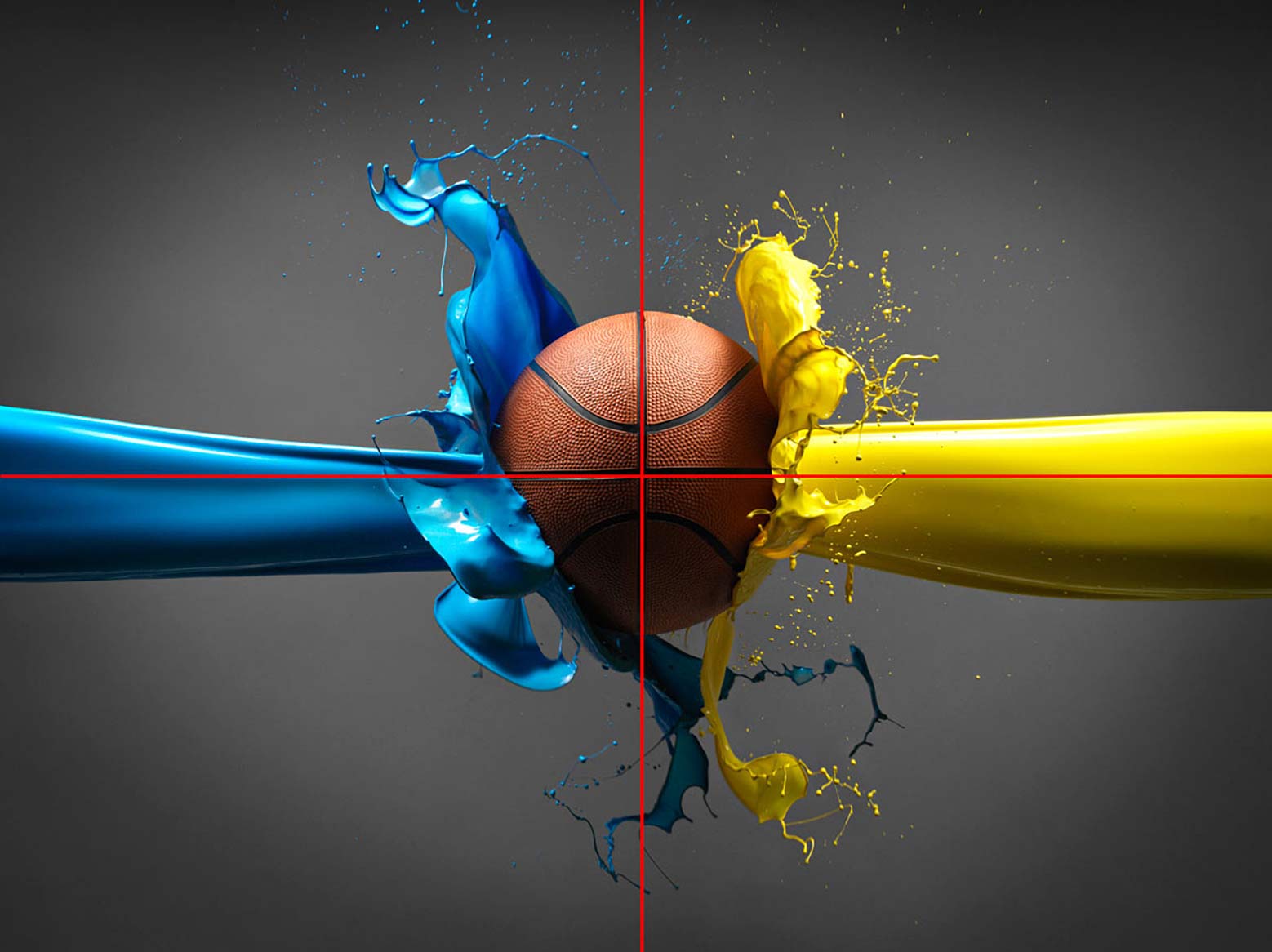
Interested in product photography? Click here.
Colour
Colour is an important part of photography and we can use this to even greater effect with some careful thought. Colours can be used to change or influence the mood and feel of an image or to draw attention to particular elements. Using juxtaposing colours within an image can be a particularly effective way of catching the viewers attention, as I show in the examples in the video.
Both the images above and below are an example of how colour theory has been used as a compositional technique.
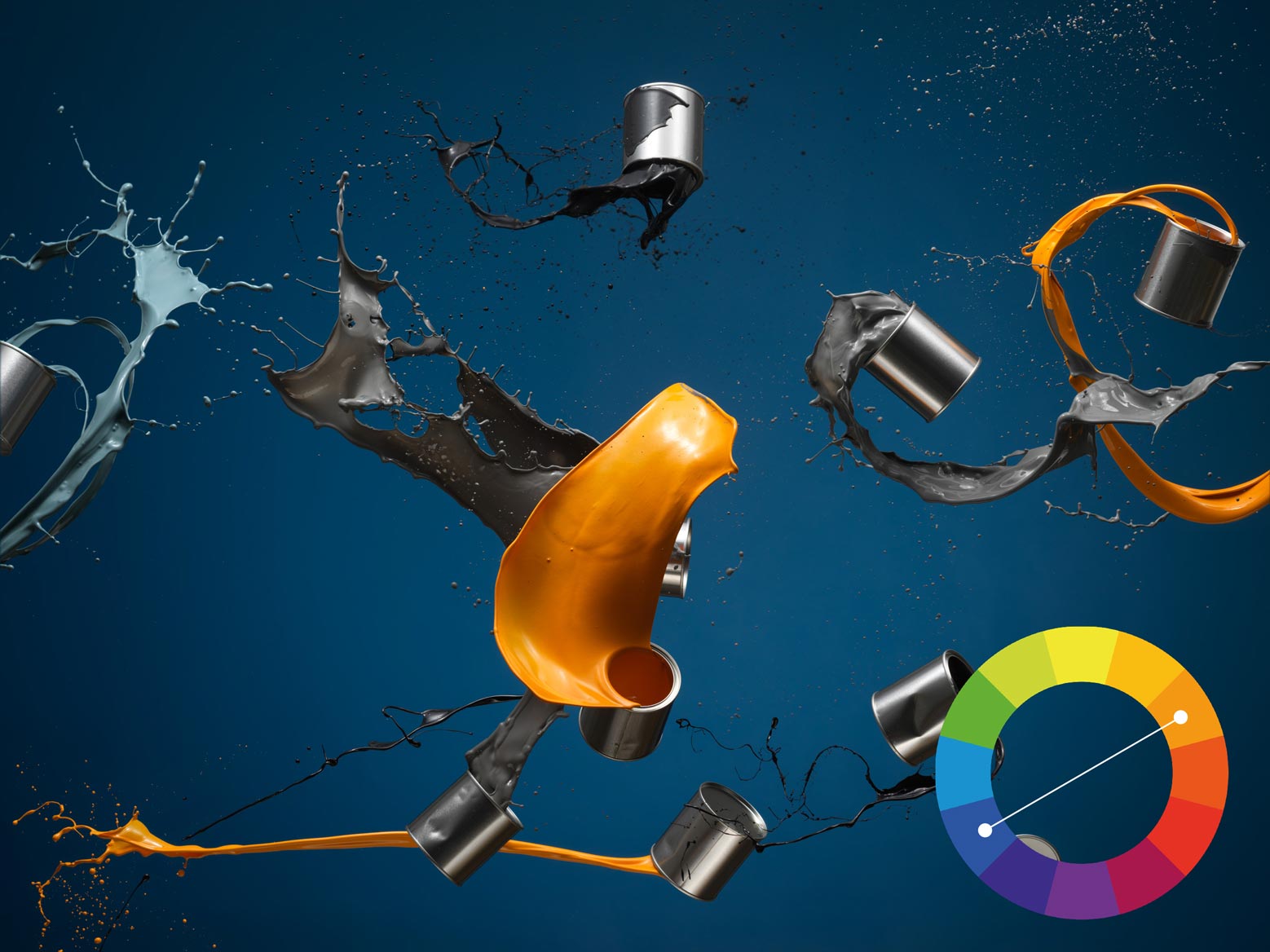
Framing
As the name suggests, framing is when you use other elements within the image to frame the subject. This can be particularly useful in creating depth and three dimensionality. The objects you use to frame the subject not only add additional elements of interest, they can also add perspective and a sense of scale.
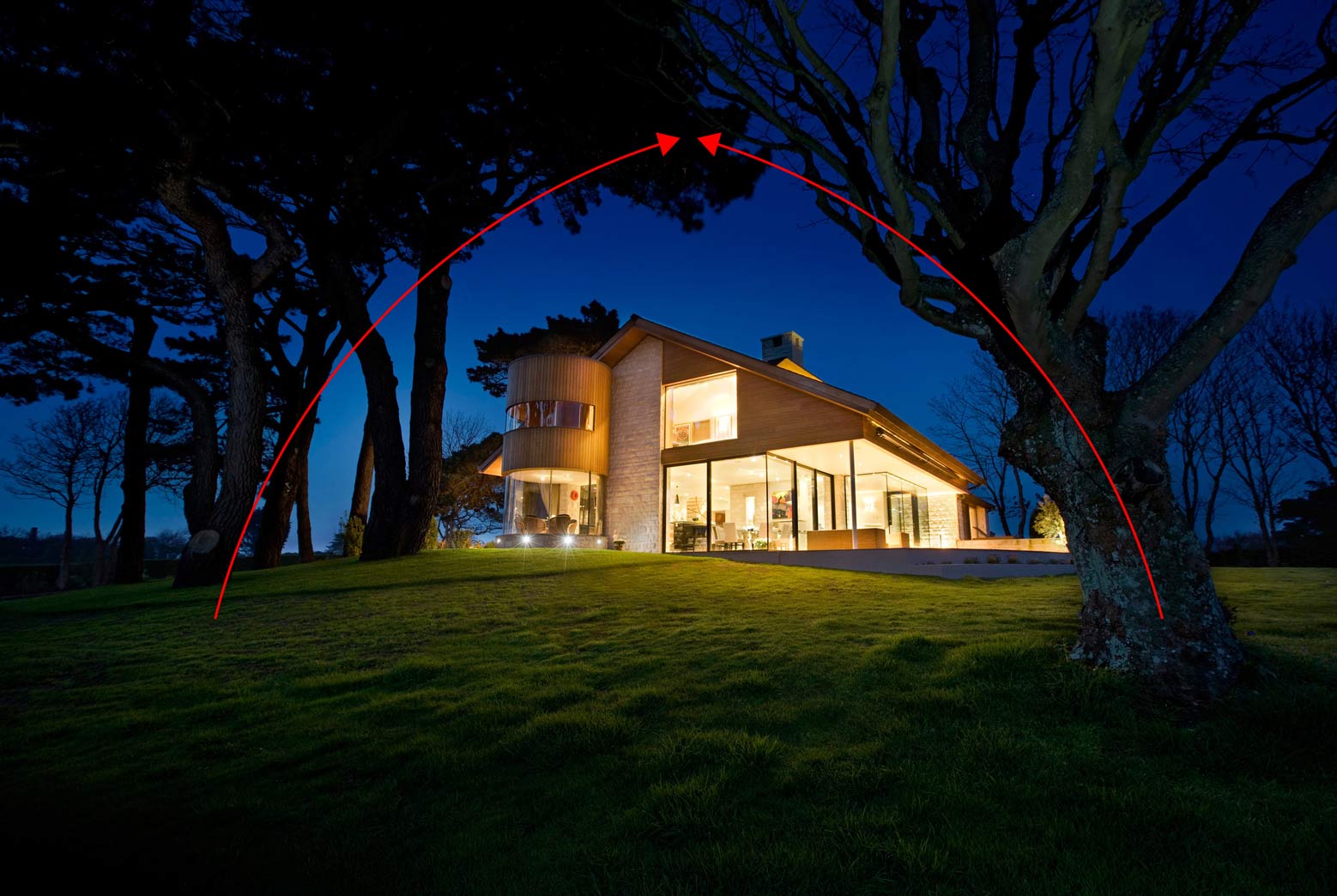
While it’s important to keep these compositional rules in mind when photographing, the most important aim is to maintain your viewer’s attention and keep their eye in the frame. This can be done using other techniques that link to the human visual system, such as left to right bias, contrast, colour, narrative etc.
As photographers, our goal is always to keep the viewer connected with our images, and while it can be beneficial to try and follow these guidelines, good photography comes down to far more than just good composition. It’s therefore important to make sure you have an understanding of everything we've covered in this course: how cameras work, how time and aperture can be used together for creative imagery, optics and their differences, the importance of light for conveying emotion and the different types of recording mediums and how these relate to image quality.
All content © Copyright Karl Taylor Education.

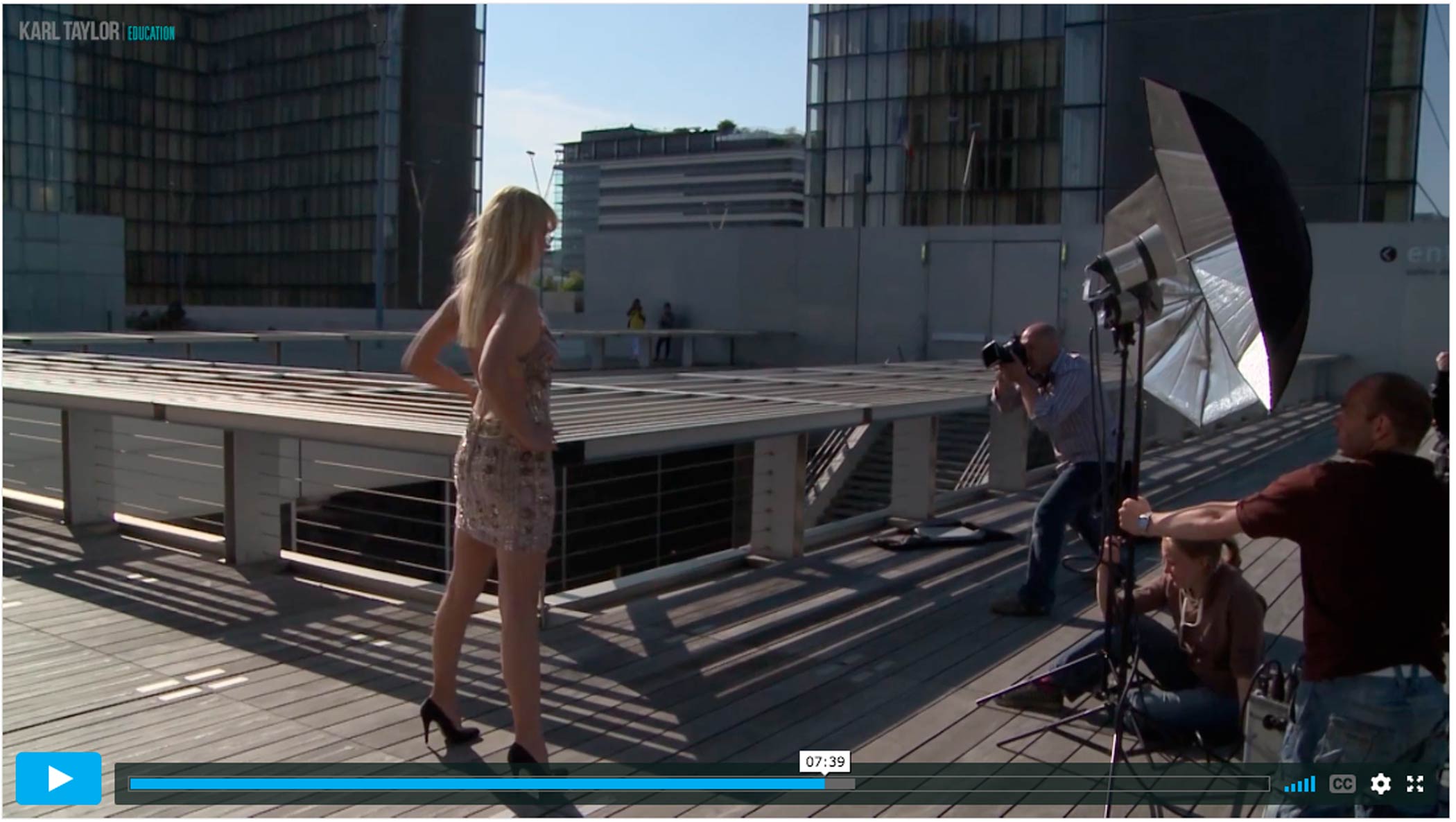

Comments
I just noticed the lens size under the equipment list.
why not mention the type of super wide angle lens?
I just noticed the lens size under the equipment list.
HI karl1
why did you use 2 heads strobes? Almost side by side, Instead 1?
Thks
Suzuki
Hi, more power and upper and lower body coverage.
Hi Karl
I’ve been subscribed to your learning programme for only a short time now, but I’ve learned more than I could have imagined when I signed up. Also, it has consolidated some of what I knew from past experience with the camera, whilst exposing some of the bad habits.
The biggest single thing you are doing for me is to show me not to fear the camera, or fear what I don’t know, or what the eventual outcome of this learning process will be. I think that my biggest fear has been that I might discover that I am no good at photography, and how disappointing such a realisation would be. This fear has left me, and has been replaced with curiosity for what can be done, and an ability to simply enjoy the passion I have for the photographic experience.
Thank you, I’m truly enjoying the ride – I hope to remain a subscriber for years to come.
The Fibonacci Sequence is another composition rule I have seen but it takes some setting up but it is found in nature. It`s a bit high brow!
Hi Karl,
I very much enjoy your relaxed but authoritative delivery in these introductory-level videos, and their high production values make absorbing all of the concisely presented essential information a very easy, appealing and inspirational process.
All good!
Thank you Graham.
I watched most of the videos on the facebook and decided to join the program, it’s a great guide for me. One day, I am hoping to find a chance to visit the studio and experience the production in person.
Hi can ask when you are shooting in manual mode do you use auto focus or manual focus too
Hi Farren, you can still use AF if shooting in Manual mode but I do often shoot in manual focus depending on the subject and circumstances for example still life in the studio or landscapes.
Hey Karl,
Browsing through your videos and looking to see what would make you chose the Canon over the X1D (I own both as well) rather than the obvious need for HSS vs high FPS, and this one confused me a bit, did you have the X1D when shooting this one?
Hi Meir, no this is long before the X1D! I’d choose the X1D mainly for quality of image reproduction but they are not as swift to use as a Canon.
Best introduction course I’ve ever seen. Really. Happy to be here.
Thank you Thiago.
Really good stuff here, Karl. I’m happy to be able to take all the information you’re sharing and, with it, reorganize my act of thinking about photography. You’re the best teacher I’ve ever had. Wish I could’ve found your work sooner. Cheers from Brazil.
Thank you.
why you use silver black umbrella here or instead we use white umbrella direct to the model face.? or we use skimmer and put light behinds the skimmer.? expain the diffrence… please..
Hi Jaspreet, the silver brolly gives a higher contrast and more sparkle which I find better for textiles and the look I wanted to achieve here. For example a Para 133 compared to the same size softbox still has a soft look but it has more contrast and 3-dimensionality to the light.
This is hands down the most value for money purchase I have EVER made. Thank you Karl and the KTE team.
Thank you Chriskylepeters, spread the word! 🙂
you’re very good at what you do Karl that’s why your name engraved in my head when people speak of great photographers, I picked up this hobby not so long ago and now I can see myself actually making a career out of it. not going to school for photography might put some doubt in people head but saying Karl Taylor my mentor might balanced that. thank you!
Thank you Jefry
Excellent videos so far! I feel like I’m learning so much in so little time. Compared to other videos I’ve seen, Karl gets straight to the point in a well organized manner without over complicating things. I will recommend this to anyone wanting to learn photography.
Thank you Josheph we appreciate that, the more recommendations we get and members then the better we can make the service for everyone!